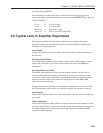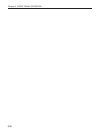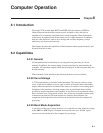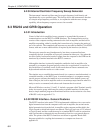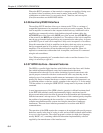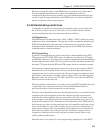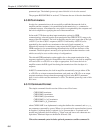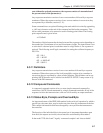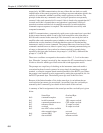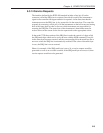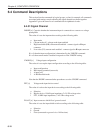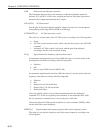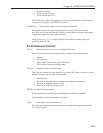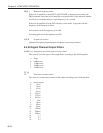
6-7
Chapter 6, COMPUTER OPERATION
sent without the optional parameters, the response consists of a transmission of
the present values of the parameter(s).
Any response transmission consists of one or more numbers followed by a response
terminator. Where the response consists of two or more numbers in succession, they
are separated by a delimiter (section 6.3.11).
Some commands have an optional floating point mode which is invoked by appending
a . (full stop) character to the end of the command and before the parameters. This
allows some parameters to be entered or read in floating point format. The floating
point output format is given below.
±1.234E±01
The number of digits between the decimal point and the exponent varies depending on
the number but is a minimum of one and a maximum of eight. The input format is not
as strict but if a decimal point is used there must be a digit before it. An exponent is
optional. The following are all legal commands for setting the oscillator frequency to
100.1 Hz:
OF. 100.1
OF. 1.001E2
OF. +1.001E+02
OF. 1001E-1
6.3.11 Delimiters
Any response transmissions consist of one or two numbers followed by a response
terminator. Where the response of the lock-in amplifier consists of two numbers in
succession, they are separated by a byte called a delimiter. This delimiter can be any
printing ASCII character and is selected via the RS232 SETUP 2 setup screen or by
the use of the DD command.
6.3.12 Compound Commands
A compound command consists of two or more simple commands separated by
semicolons (ASCII 59) and terminated by a single command terminator. If any of the
responses involve data transmissions, each one is followed by an output terminator.
6.3.13 Status Byte, Prompts and Overload Byte
An important feature of the IEEE-488 standard is the serial poll operation by which a
special byte, the status byte, may be read at any time from any instrument on the bus.
This contains information which must be urgently conveyed from the instrument to
the controller.
The function of the individual bits in the status byte is instrument dependent, apart
from bit 6 (the request service bit) whose functions are defined by the standard.
In the model 7220, bits 0 and 7 signify ‘command complete’ and ‘data available’



